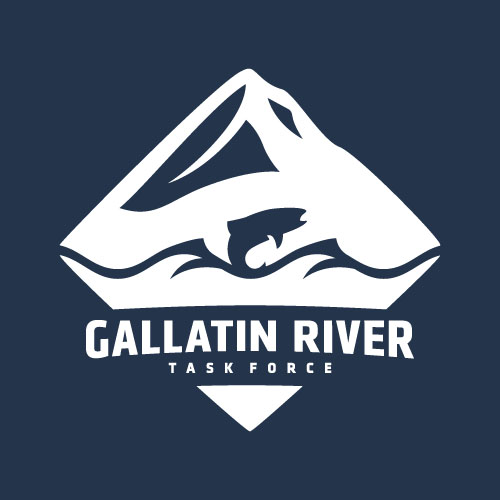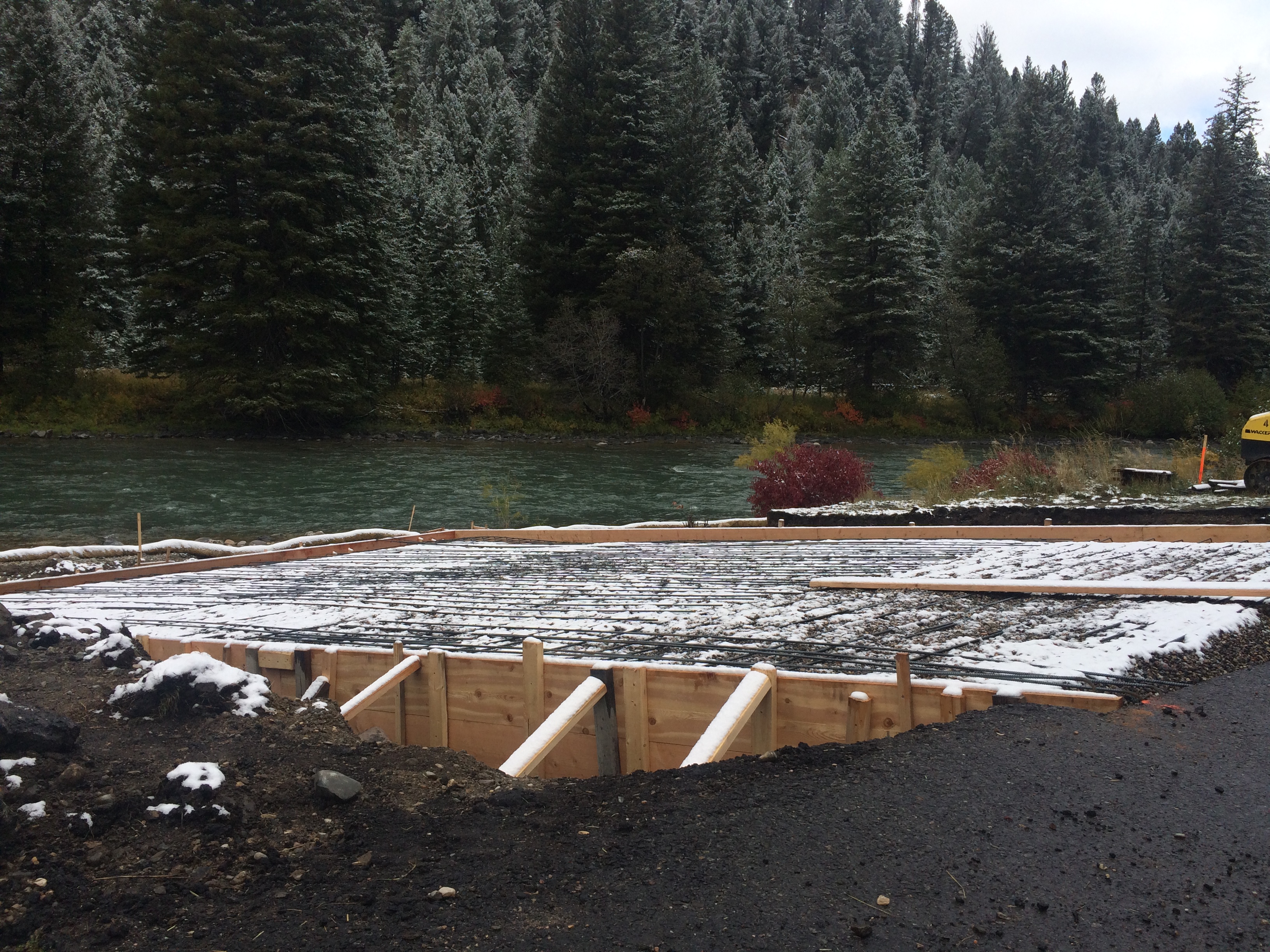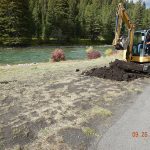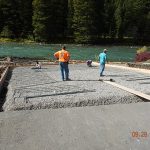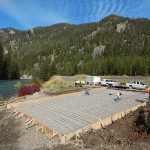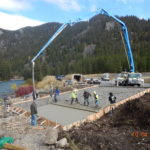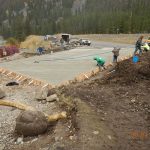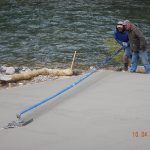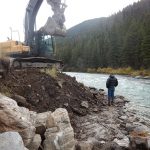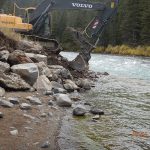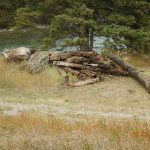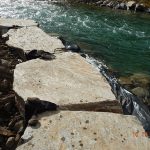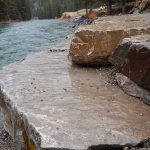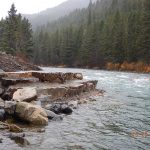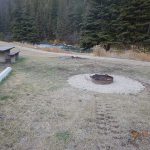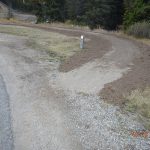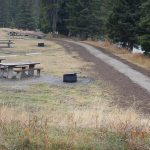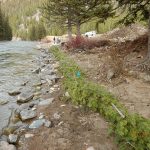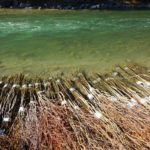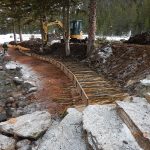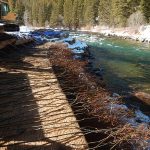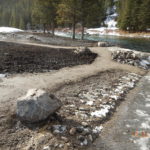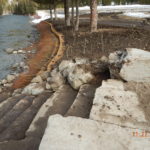Work to stabilize streambanks and improve river access has begun at Moose Creek day use area. Restoration work at Moose Creek is the first of many projects lead by the Gallatin River Task Force and the Custer Gallatin National Forest that will enhance access and safety for river users and restore riparian habitat along the Gallatin corridor.
- Preparing the bedding surface for the boat ramp. PC: Jeff Dunn
- Setting up the frame for the concrete. PC: Jeff Dunn
- Locked, loaded, and ready to pour concrete. PC: Jeff Dunn
- Pouring concrete. PC: Jeff Dunn
- Establishing grooves. PC: Jeff Dunn
- Close up of grooving process. PC: Jeff Dunn
- Removing hazardous bridge abutment. PC: Jeff Dunn
- (Close Up) Removing hazardous bridge abutment. PC: Jeff Dunn
- Refuse pile from bridge abutment. PC: Jeff Dunn
- Delivery of conifer boughs from Big Sky Fire Prevention to help with streambank restoration. PC: Jeff Dunn
- First tier of the kayak launch in place. PC: Jeff Dunn
- Completed first tier of the kayak launch. PC: Jeff Dunn
- Second tier of the kayak launch in place. PC: Jeff Dunn
- View of the kayak launch looking upstream. PC: Jeff Dunn
- Fire ring shifted to allow room for new trail. PC: Jeff Dunn
- Trail construction begins. PC: Jeff Dunn
- Trail construction complete. PC: Jeff Dunn
- Conifer bundle at the toe (bottom front) of streambank to be restored at Moose Creek. PC: Jeff Dunn
- Willows harvested by volunteers, Task Force staff, an MCC crew, and consultants to be layered in restored streambanks. PC: Jeff Dunn
- Streambank restoration in progress (downstream view). PC: Jeff Dunn
- Streambank restoration in progress (upstream view). PC: Jeff Dunn
- Completed trail connects boat ramp and kayak launch. PC: Jeff Dunn
- View of restored streambank from the completed kayak launch. PC: Jeff Dunn
In 2015, the Task Force mapped 111 public river access sites between Yellowstone National Park boundary and Spanish Creek to prioritize sites for future restoration work. The first project focuses on the Moose Creek recreational area, a heavily trafficked public day-use area and campground with severe erosion and streamside vegetation damage.
Loss of streamside vegetation and heavy recreational use of the area contribute excess fine sediment (sand, mud, or clay) to the river and threaten the health of the fishery. Excess fine sediment negatively harms trout by covering spawning habitat; reducing visibility; and impacting breathing.
The Moose Creek restoration project will focus on stabilizing streambanks, enhancing streamside vegetation, concentrating impact with trails and fencing, building a boat ramp and tiered kayak launch, and installing an educational interpretive sign.
The Moose Creek restoration project is the first of many, which will ensure the long-term health of the Gallatin River. The Task Force is actively seeking support to complete work at Moose Creek and to initiate future projects.
Contact us at (406) 993-2519 or email us at headwaters@gallatinrivertaskforce.org to support this project.
